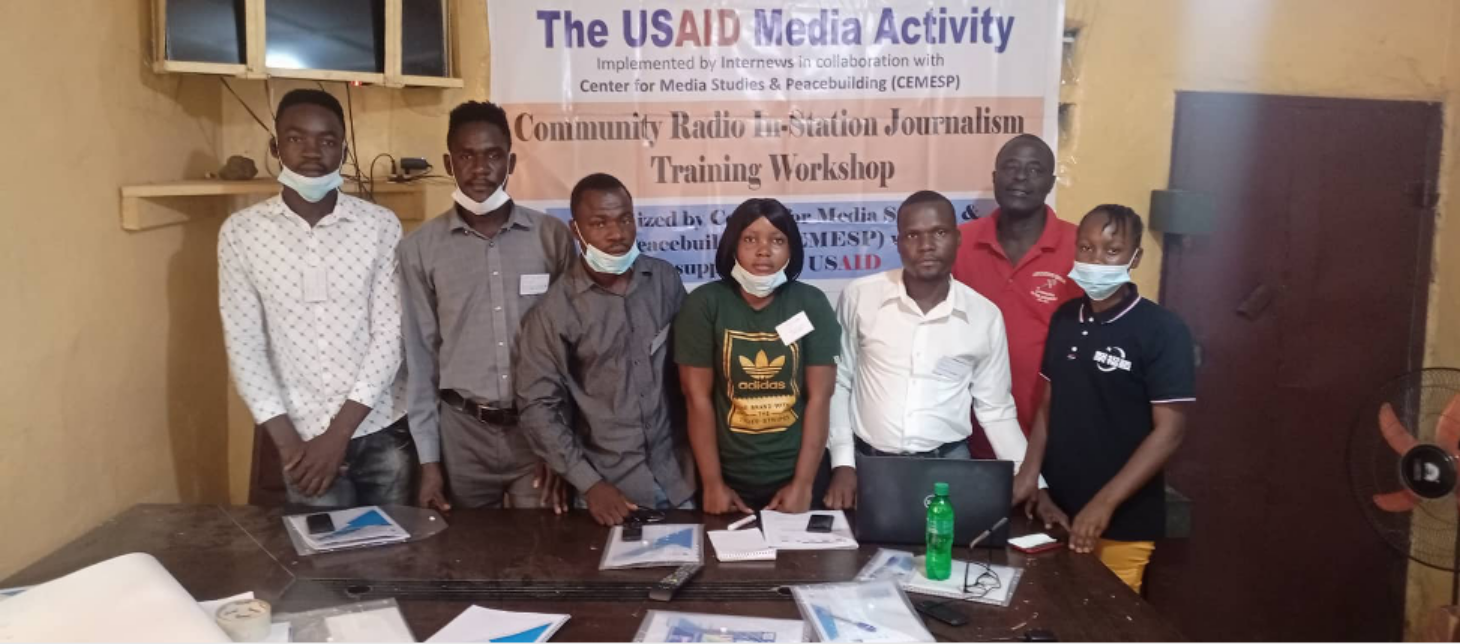The Center for Media Studies and Peacebuilding (CEMESP) has started three days of intensive in-station journalism training for ten of thirty community radio stations in seven counties in Liberia.
The training seeks to address content development and capacity deficits confronting community radios across Liberia.
CEMESP has deployed four Media trainers led by journalist, Frank Sainworla, to ten community radio stations in Rivercess, Sinoe, Lofa, Maryland, River Gee, Grand Kru, and Grand Gedeh Counties.
The training is part of a USAID-sponsored Liberia Media Activity implemented by Internews in Liberia with a specific focus on entry-level Journalists in the Liberian media.
CEMESP is leading the implementation of the journalism training component of the USAID Liberia Media Activity which seeks to improve the quality of media reporting through mentoring.
Community Radios covered under the three days in-station training are Voice of Sinoe in Greenville, Sinoe County, Rivercess Broadcasting Service (RBS Radio) in Cestos City, Rivercess County, Smile FM in Zwedru, and Peace Radio in Toe Town, Grand Gedeh County.
A team of journalism trainers is also deployed to the Voice of Grand Kru, in Barclayville City, Voice of Pleeboe in Maryland County as well as Alternative Youth Radio, in Zorzor, Radio Tamba-Taikor in Foyah, and Vahun Community Radio all in Lofa County.
The manual used by the trainers is divided into five sections which include topics on Radio News Gathering and Programs Production, Trending Themes for Community Radio Broadcast (climate change, environmental, Natural resources reporting), Good Governance, Elections, and Political Reporting, as well as Integrating Digital and social media in Broadcast and Human Rights-Based Reporting (health, youth and gender empowerment)
Each section of the in-station training takes into account broad content specification that integrates related themes and issues that can be delivered in different sessions in a measured way, using varied methods and tools. The ten separate trainings under this phase of the Project is targeting at least sixty Community journalists.
CEMESP’s Executive Director Malcolm Joseph said under this long-term project, Internews-USAID considers the training of thirty community radios in the fifteen counties as a core component of the project which squarely commits itself to strengthen the capacities of community radios which have been key to information sharing, especially in far-to-each areas.
“Before the decision was made on stations to qualify, a training and institutional need assessment was done to determine the content product and technical capacity of the thirty stations,” Joseph said.
According to him, this is how the stations assessed managed to qualify as beneficiaries based on set criteria in the LMI project.
In line with the project goal, Joseph said the training will help community radios understand key topics and modules to enhance their professional output in better serving the communities and inspire their audiences to participate in transformative decision making, finding solutions to local issues.
The remaining twenty radio stations will receive training in line with the project goals and objectives.

